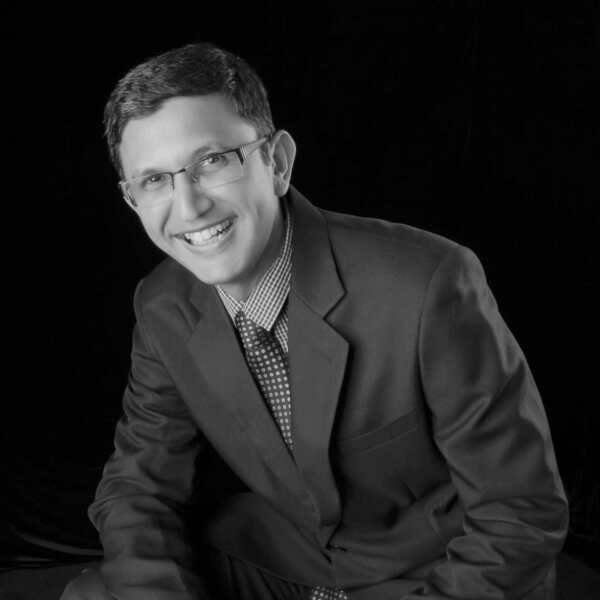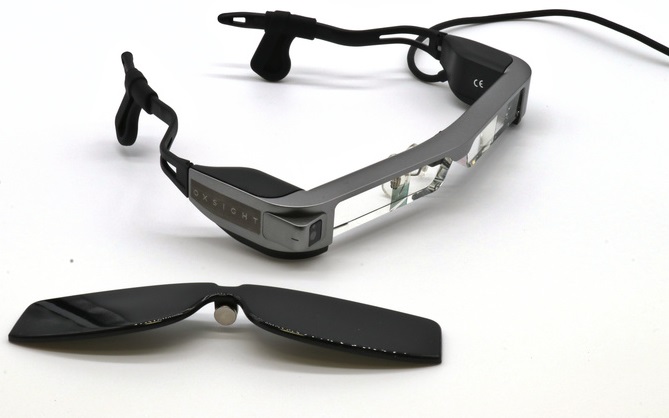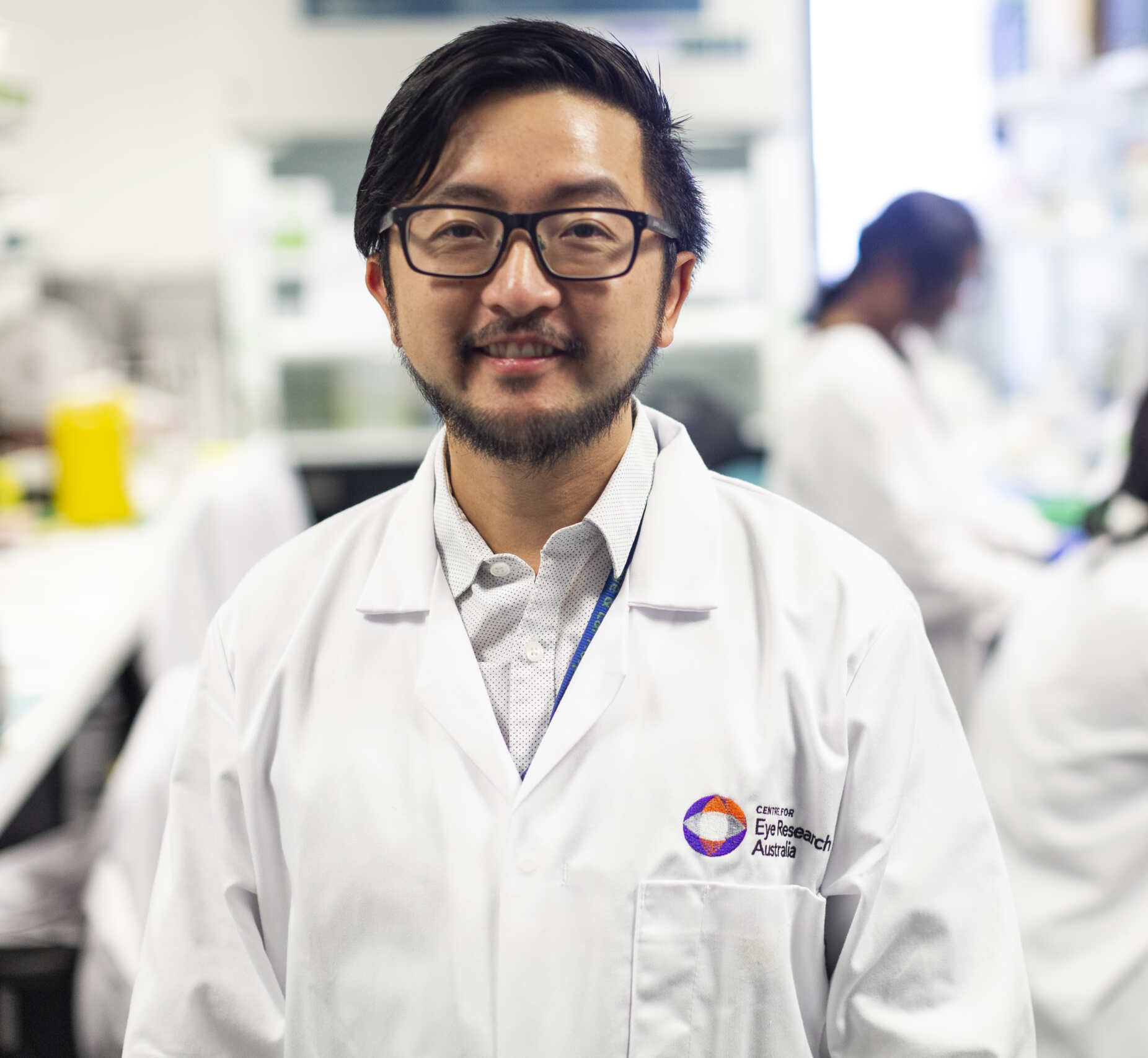18 March, 2024
Ritesh Hargovind, a Retina Australia member, shares his journey living with RP (retinitis pigmentosa).
We spoke to Ritesh about his diagnosis, his experience living with RP over the past 36 years, his greatest challenge, and learned about an assistive technology which he has been using to support his vision.
Hi Ritesh,
Thank you for talking with us and sharing your experience living with RP today.

When were you diagnosed with RP?
I was diagnosed when I was 14 – 36 years ago. My mother noticed that I was bumping into furniture and other things, and so we visited the ophthalmologist. We were living in Fiji at the time, and they diagnosed me with peripheral vision loss as well as problems with night vision. However, it wasn’t until we moved to Australia that I received the diagnosis of retinitis pigmentosa (RP).
Can you talk about your journey and how you have coped living with RP over the years?
The diagnosis was really difficult – dealing with the possibility of going blind later in life was very hard. So far I have been lucky and I still have some sight.
Because I was bumping into people and things all the time, it was very difficult when I was out and about – people would abuse me and shout obscenities at me. Being vision impaired is not apparent in the same way as having an arm or leg missing would be, so people didn’t realise why I was the way I was.
Getting a cane about 10-12 years ago was a real help to me. Initially I was hesitant and embarrassed to have it, but now it is just second nature to me to use it. It helps me get around without bumping into things and people, but more importantly it has helped to alert people to the fact that I have this vision impairment, and things have improved markedly.
I went to Guide Dogs Queensland to get the cane, and I received a couple of hours of training at the time which was really helpful. They took me to a shopping centre and helped me learn how to use the cane around the shops and going up and down the stairs etc.
What would you say has been the biggest challenge you have faced?
The biggest challenge for me was when I had to give up driving back in 2000. Driving was something I really enjoyed, and losing that independence was a big change in my life, as I had to learn to rely on others – family members and public transport – to get around. I am lucky to have my wife and sons who are happy to help me with this.
What assistive technologies have you investigated?
I looked online for assistive technologies that might help me but didn’t find anything until I discovered the group in Oxford who developed the OxSight Crystal Glasses (pictured on the right).
You have been using the OxSight Crystal Glasses for the past few years. How did you find out about them?
They have been fantastic. These glasses assist with improving your peripheral vision.
I first had the opportunity of trying on the glasses in Brisbane in 2022, and they were amazing.

I decided I wanted to purchase them, but the Australian agent Quantum were not sure how long it would take to get a pair in Australia. So I decided to travel to the UK and purchase a set there. I had to send through my prescription beforehand, as they work as regular glasses as well. I went to Oxford for the fitting and the optometrist was very helpful.
Can you please share your experience using them?
Using them has allowed me to see the whole TV screen for the first time, and also when I go to the movies I can see the whole screen. Previously even sitting in the back row I couldn’t see the whole picture. There is also a feature that allows you to enlarge or magnify the field of vision or shrink at as you wish.
One thing to be aware of is that they cannot be used when you are walking around, as the depth perception is changed and you can’t judge where things are. But they are a fantastic help to me.
Currently my field of vision is down to under five degrees, and the Oxsight Crystal glasses have a maximum field of view of about 68 degrees, whereas normal sighted people have visual fields of around 150 – 170 degrees.
Even though the glasses have a maximum field of 68 degrees, the most I would be able to see out of them would be 30 – 40 degrees, as my RP has progressed quite a bit. However, it is still a lot better than the five degrees I have without the glasses.
I believe that there is a new model being released at some stage which will include internet connectivity and allow you to project your phone screen onto them. I don’t know when that is due to come out or whether it will be available in Australia.
What would you say to people who are thinking about trying out a new technology like this?
I would say go for it! It is absolutely worth it.
The cost is high but people should hopefully be able to access money through the NDIS.
Can you please tell us how you found out about Retina Australia
I originally found out about Retina Australia about 20 years ago through my ophthalmologist up in Queensland. At that time I joined Retina Australia’s Queensland branch, and then more recently when the organisation became national, now I am a member of Retina Australia.
How has Retina Australia assisted you on your journey?
I have found it really helpful in keeping up to date with the latest developments in eye health and research through the newsletters etc. Providing that information is a great help to people with inherited retinal diseases.
https://retinaaustralia.com.au/ritesh-hargovind-shares-his-journey-living-with-rp/
Other Blogs

World Research Summary by Dr Catherine Civil
Hot Off The Press Check out below to see what new inherited retinal disease (IRD) therapies are in the pipeline. There...

Research Grant Impact Highlight: Associate Professor Raymond Wong
Associate Professor Raymond Wong, from the Centre for Eye...

Research Updates on Inherited Retinal Diseases: ARVO 2025 Summary
For those living with inherited retinal diseases (IRDs), and...
